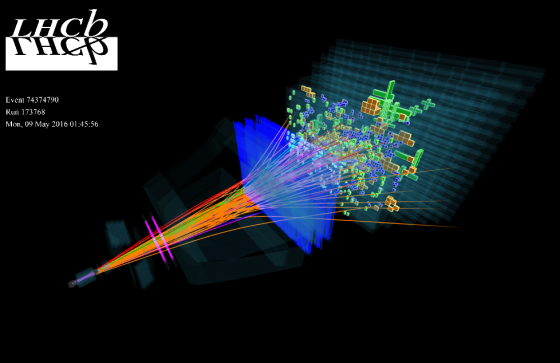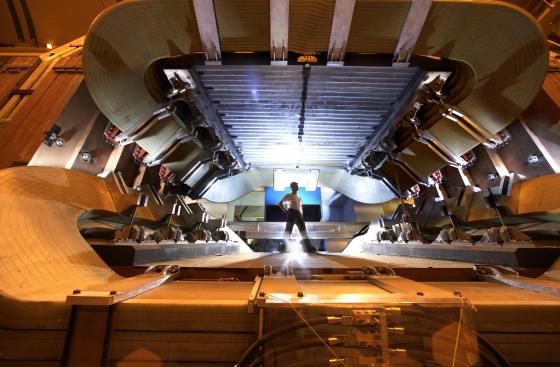Immediately after the Big Bang, some 14 billion years ago, the Universe was made up of particles of matter and antimatter in equal measure. Immediately after that, antimatter disappeared, and for this reason we observe a Universe apparently consisting of matter alone. Why antimatter disappeared? Researchers hope to shed light on this characteristic of the Universe by studying the particles and antiparticles created in high-energy collisions between protons of the Large Hadron Collider (LHC) at CERN, the European Laboratory for Particle Physics. In fact, in these collisions it is possible to reproduce conditions similar to those that occurred immediately after the Big Bang.
LHCb is one of the experiments operating at the LHC accelerator at CERN that studies the properties of particles containing the massive quarks beauty (b) and charm (c). The particles and anti-hadronic particles consisting of these quarks, being unstable, do not exist in the present Universe, while they were present in the primordial Universe and can be reproduced and observed at LHCb in large quantities. The LHCb experiment has been realized to study, among other things, the subtle differences that particles and antiparticles with beauty can show, so to understand why nature prefers matter to antimatter. In addition, the huge number of particles with beauty and charm that can be produced, allows countless measurements of very high precision that can falsify theoretical models and / or produce indications of new physics, expected or unforeseen.

The LHCb collaboration is made up of 1111 researchers, coming from 69 different university institutes and research laboratories of 17 different states (data as of January 2015). Hundreds of technicians and engineers also contributed to the realization of the detector. Parts of the detector were manufactured at the various national laboratories and then assembled at CERN. Doctoral students and young researchers from all over the world work in LHCb.
Other experiments, including ATLAS, CMS and TOTEM, are in operation at CERN's LHC.
Italian scientists have always made a huge contribution, both theoretical and particle physics, to CERN and LHC, funded in Italy by INFN and many universities, including Genoa.




